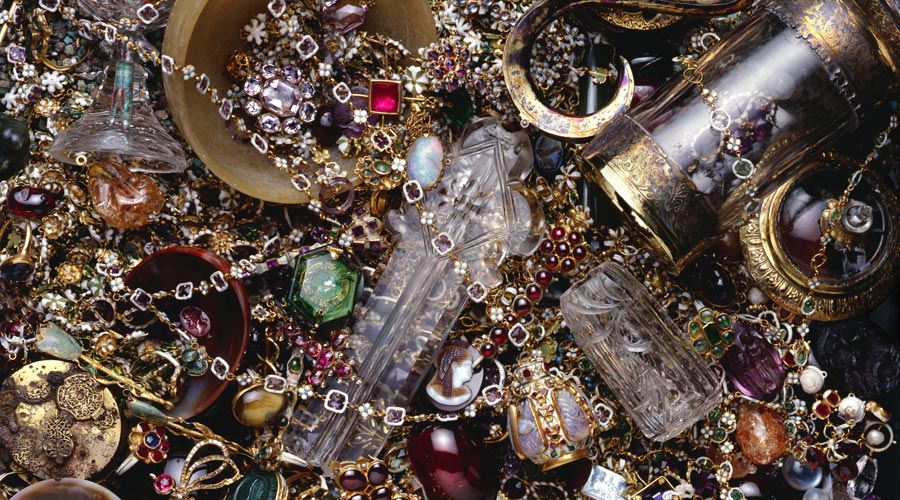Tudor and Stuart
The museum’s Tudor and Stuart collections span the period 1485-1714, and reflect the huge changes in London life and society during this time. They range from the world-famous Cheapside Hoard to our comprehensive ceramics collection, representing the unique role of London in the turbulent 16th and 17th centuries. Please note, the Cheapside Hoard is not currently on display.
Cutlery and base metal artefacts
One of the major strengths of the collection is the base metal artefacts. The cutlery collection is notable, containing over 1,500 pieces. Although the majority have been recovered from the Thames foreshore, a significant number were purchased by the London Museum from the private collection of Mr. Hilton Price.
The Cheapside Hoard is the greatest hoard of Elizabethan and Jacobean jewellery in the world. The museum also holds ones of the most significant early watch collections in Britain.
Please note the Cheapside Hoard is not currently on display.
The Cheapside Hoard is not currently on display. A purpose-built gallery for the permanent display of the Hoard is planned for our new museum in West Smithfield, which is scheduled to open in 2024.
Dress accessories and toys
The collection of base metal dress accessories and toys is of similar national importance. The museum's pewter collection is unparalleled for provenanced pieces with specific local associations.
Edged weaponry
The museum has an extensive collection of Tudor and Stuart edged weapons that compares favourably with those of the Royal Armouries and the Wallace Collection. The group of swords from the Hounslow Sword Factory manufactured during the early 17th century is particularly significant.
Coins
The collections of coins and coin-like objects are extensive, but not as comprehensive as those of the national museums. The collection of trade tokens presented by Beaufoy in 1850 are a largely untapped resource, despite a published catalogue.
Ceramics
It is in the area of ceramics that the post-medieval collection is internationally important. The range and completeness of the vessels, together with the complementary material in the Museum of London Archaeological Archive, make this collection of interest to scholars across the world.
Glass
The glass collections are also extensive. Some of the pieces in the Garton Collection of English table glass given to the museum in 1943 are 17th century, including the Chesterfield flute.
Bone, antler, ivory, horn and leather
Among the collections of organic materials, the most important are the assemblages of bone, antler, ivory, horn, and leather. The bone group alone consists of nearly 1,000 objects.








